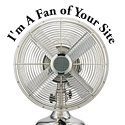Have you had or considered bodywork for treating fibromyalgia (FMS) or chronic fatigue syndrome? Are you asking, "What in the world is bodywork?"
The term bodywork is used for any therapeutic or healing methods that involve touching or physical manipulation. Chiropractic and physical therapy fall into this category and are widely used for FMS, but bodywork also covers a lot of alternative treatments, including massage, Rolfing, the Bowen Technique, and Reiki.
You can find claims about each of the alternative forms of bodywork as a treatment for FMS or Chronic Fatigue Syndrome, but some have more scientific backing than others.
To help you make informed decisions about your treatment options, continue reading.
What is Bodywork?
The term bodywork is used for any therapeutic or healing methods that involve touching or physical manipulation. Bodywork encompasses a wide range of alternative-medicine techniques, including all types of massage, Rolfing, the Bowen Technique, and Reiki.
Doctors usually recommend bodywork as a complementary treatment, not as the only treatment. While you may want to try alternative treatments your doctor doesn't recommend or endorse, you should include him/her in your decisions and report back to your doctor on your experience with the treatment.
Whether bodywork will help you with fibromyalgia depends both on the form of bodywork and on your specific symptoms.
What is Massage Therapy?
First, you need to understand the difference between Swedish massage, which is primarily for relaxation, and therapeutic massage, which is aimed at helping the body function better. A clinical massage therapist uses techniques such as myofascial release and neuromuscular therapy to get muscles and connective tissues to relax and function properly.
Research shows therapeutic massage can help people with FMS if it's the correct type of massage for the specific symptoms. Experts say massage is especially useful for people who can't exercise because it has similar effects on your tissues and circulatory system.
Make sure you're going to a licensed massage therapist (LMT) and be sure to discuss any other pain conditions or health problems you have.
Massage as a Fibromyalgia Treatment
Because FMS causes pain and makes your body extremely sensitive to touch and pressure, you probably won't be able to tolerate any kind of deep-tissue massage. Open lines of communication are vital when it comes to how much pressure the massage therapist can put on your muscles. Make sure your massage therapist is familiar with the gentle touch required for treating FMS or is willing to do some research on it.
After a massage, you're likely to feel more relaxed and get a better night's sleep, which in turn can help alleviate your symptoms.
What is Rolfing?
Rolfing is a form of deep-tissue work with the goal of bringing segments of the body into proper alignment. It's based on the belief that the fascia (fibrous connective tissue that covers muscles and runs throughout the entire body) can get stiff, shortens, and becomes less elastic, and thereby lead to a lot of musculoskeletal problems.
Rolfing as a Fibromyalgia Treatment
Rolfing generally involves high amounts of pressure and very deep tissue work, so while some practitioners may claim it's beneficial for fibromyalgia, most experts agree that this kind of bodywork will cause huge amounts of pain for people with FMS.
What is the Bowen Technique?
The Bowen Technique involves gentle rubbing techniques that practitioners say send impulses to the brain and nervous system that alleviate pain, help relax your muscles, restore normal movement to joints and connective tissues, and increase blood flow. The underlying theory is similar to acupuncture, and several Bowen moves involve acupuncture points that are believed to bring your body's energy in balance. When the treatment is effective, relief is often immediate.
The Bowen Technique as a Fibromyalgia Treatment
In a study conducted by Jo Anne Whitaker, MD, of the American College of Rheumatology, almost all FMS participants had some relief, which lasted from a few days to several weeks. After several sessions, a few people reported a complete remission of FMS symptoms. Benefits can include better sleep, less neck pain, better balance, and less dizziness.
What is Reiki?
Reiki is a Japanese technique for stress reduction and relaxation that also promotes healing. It is administered by "laying on hands" and is based on the idea that an unseen "life force energy" flows through us and is what causes us to be alive. If one's "life force energy" is low, then we are more likely to get sick or feel stress, and if it is high, we are more capable of being happy and healthy.
Reiki as a Treatment for Fibromyalgia
Reiki is a Japanese technique based on the belief that spiritual energy, properly channeled, can heal the physical body. It can be done through light touch or even at a distance. Reiki is most often used for stress reduction and relaxation but also has many other applications. Practitioners say it can help with pain, sleep, muscle tension, anxiety, depression, circulation, and poor immune function. Some practitioners recommend against using Reiki on anyone with a psychological disorder.
Researchers from the University of Washington and Seattle's Harborview Medical Center, published in the Fall of 2008, studied Reiki as a fibromyalgia treatment and found it was not effective at reducing symptoms, using either touch or distance methods. The researchers recommend more research before Reiki is recommended as a fibromyalgia treatment.
Some practitioners and patients say they've seen results from Reiki. As with Bowen treatments, risk is low.
What types of bodywork have helped you? Have you tried any that didn't work? Share your experiences here.
Sources:
Cathy Wong, About.com: Alternative Medicine, Rolfing, 2007.
Rolf Institute of Structural Integration, About Rolfing, 2007.
Ruth Werner, Lippincott Williams, & Wilkins, A Massage Therapist's Guide to Pathology, 3rd Edition.
Julie Deardorff for The Chicago Tribune, Massage Therapy Rubs Sufferers the Right Way, 2005.
http://www.reiki.org/
Adapted from Adrienne Dellwo, http://chronicfatigue.about.com.



































2 cherished words:
Thank you for the nice article about Bodywork for Fibromyalgia. You mention Rolfing® structural integration in the article and cite two sources for your information. One of them being The Rolf Institute®. Would you be willing to include a link to The Rolf Institute website? http://rolf.org
I've been in private practice now for more than 13 years. I've worked with many people diagnosed with Fibromyalgia. These people need more than just bodywork. It's a complex syndrome. Many Rolfers, myself included, have a very broad spectrum of touch from direct, hands-on manipulation to subtler cranial-sacral and visceral manipulation.
A blanket statement that Rolfing causes too much pain is not accurate. Fibromyalgia manifests differently in different people. I've down direct work on some who loved it. It relieved the knots in the tissues and helped them feel better. Others, I had to do more subtle work with, but they benefited as well. I alway monitor someone's system carefully so as not to overwhelm them or create more pain.
Thank you for reading.
Carole LaRochelle, CSI
Advanced Certified Rolfer™
Rolf Movement Practitioner™
Thanks for sharing the link to the Rolf website. This is just a brief article explaining various types of treatment for fibromyalgia. Every fibromyalgia patient has different reactions to the different methods. This article is just the "tip of the iceberg" and was provided to share new ideas for fibromyalgia sufferers.
Post a Comment